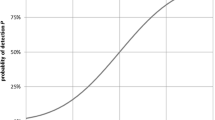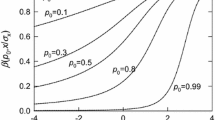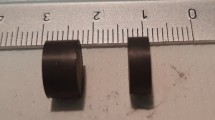Abstract
When reporting activity measurement results near the natural limit for activities, (zero), care must be taken not to report observed values from the unfeasible region and not to report confidence intervals extending beyond the limit of the feasible range. This can be achieved by reporting best estimates, where the requirements that the best-estimate values remain in the feasible range and that the confidence intervals do not extend beyond its limit are taken into account. The use of the truncated and renormalized normal distribution, defined by the primary measurement result, as the posterior in the calculation of the best estimates fulfills both requirements, but suffers in that it introduces a bias into the measurement results reported, that is, the observed value may not lie within the interval, centered at the best-estimate value and having a width equal to twice its uncertainty, and that, consequently, the use of best estimates may lead to unacceptable results. Therefore, a posterior, comprising the Dirac delta function distribution δ(a) and the truncated normal distribution, is used for the calculation of the best estimate. It is shown that here the bias introduced is smaller; the observed value lies within the interval centered on the best-estimate value and has a width equal to twice its uncertainty, and that these best estimates perform better when used in calculations of the mean.






Similar content being viewed by others
References
Cowen C, Ellison SLR (2006) Analyst 131:710–717
Korun M, Maver Modec P (2010) Accred Qual Assur 15:515–520
Weise K et al (2006) Rad Prot Dosim 121:52–63
Analytical Methods Committee (2008) Accred Qual Assur 13:29–32
Willink R (2010) Accred Qual Assur 15:521–527
Rivals I, Fabbri C, Euvrard G, Blanchard X (2012) J Radioanal Nucl Chem 292:141–153
Abramowitz M, Stegun IA (1965) Handbook of mathematical functions, 4th edn. Dower publications, New York
ISO 11929 (2010) Determination of the characteristic limits (decision threshold, detection limit and limits of the confidence interval) for measurements of ionizing radiation—fundamentals and application, International Organization for Standardization
Debertin K, Helmer RG (1988) Gamma- and X-ray spectrometry with semiconductor detectors. North-Holland, Amsterdam
Analytical Methods Committee (2010) Accred Qual Assur 15:189–191
Author information
Authors and Affiliations
Corresponding author
Rights and permissions
About this article
Cite this article
Korun, M., Zorko, B. Reporting measurement results of activities near the natural limit: note and extension of the article “Interpretation of measurement results near the detection limit in gamma-ray spectrometry using Bayesian statistics”. Accred Qual Assur 18, 175–179 (2013). https://doi.org/10.1007/s00769-013-0963-1
Received:
Accepted:
Published:
Issue Date:
DOI: https://doi.org/10.1007/s00769-013-0963-1




